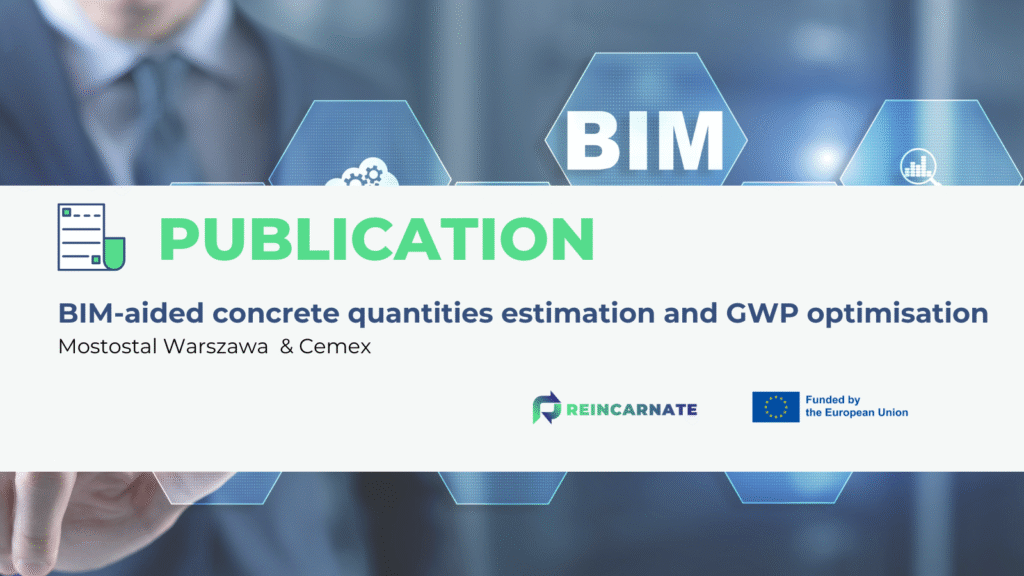Reincarnate is pleased to share the publication of the paper “BIM-aided concrete quantities estimation and GWP optimisation,” featured in the August 2025 issue of Materiały Budowlane (Vol. 8/2025, pp. 101–109). The publication addresses the potential of Building Information Modelling (BIM) to improve material quantity estimation and sustainability reporting in construction, aligning with the goals of Reincarnate, which promotes digitalisation, circularity, and reduced environmental impact across the built environment.

Digitalising Material Estimation for Sustainability
The article, co-authored by A. M. Muchla, A. Brachaczek-Jokel, J. C. Diaz Garcia, T. Piotrowski, P. Dymarski, W. Olczak, and M. Dmochowski, explores how BIM tools can enhance the accuracy of concrete quantity take-offs and integrate Global Warming Potential (GWP) data directly into project workflows. The study highlights that while BIM adoption is growing across Europe, its application in Poland is still voluntary, though supported by initiatives such as the “Digitalization of the Construction Process in Poland” project and the creation of a national CCI classification.
Despite BIM’s wide use for design coordination, material estimation remains a weak point. Current tools often overlook this step, even though it is critical for cost control, logistics, and environmental reporting.
To address this gap, the authors present a case study of the Cemex Revit plug-in, developed and tested within the Reincarnate project. The tool enables automated estimation of concrete quantities, supports streamlined ordering processes, and embeds GWP values directly into the design environment.
By integrating these features, the plug-in reduces the risk of over- or under-ordering, minimises construction waste, and simplifies compliance with emerging sustainability requirements. It further supports construction logistics, making processes more efficient and environmentally accountable.
Key Benefits of the Approach
Efficiency in Quantity Take-Offs: Automated calculations provide accurate material data, saving time and reducing errors.
Integration of Environmental Data: Direct access to GWP values enables sustainability reporting from the earliest project stages.
Support for Future Regulations: The approach prepares stakeholders for upcoming requirements in Whole Life Cycle assessment and reporting.
This publication underscores the role of BIM not only as a design tool but also as a driver of operational efficiency and sustainability. By embedding quantity estimation and environmental data directly in the digital workflow, the Cemex Revit plug-in demonstrates how construction practices can be both smarter and greener.
